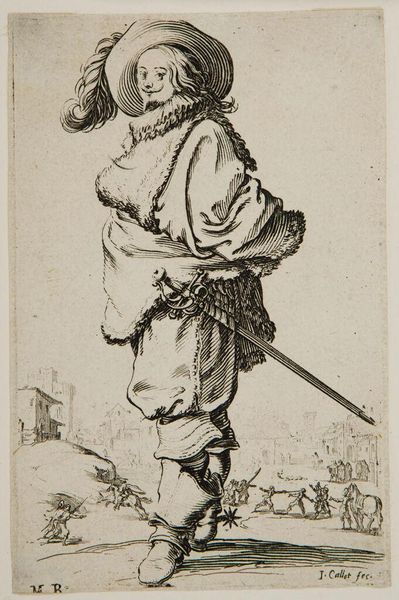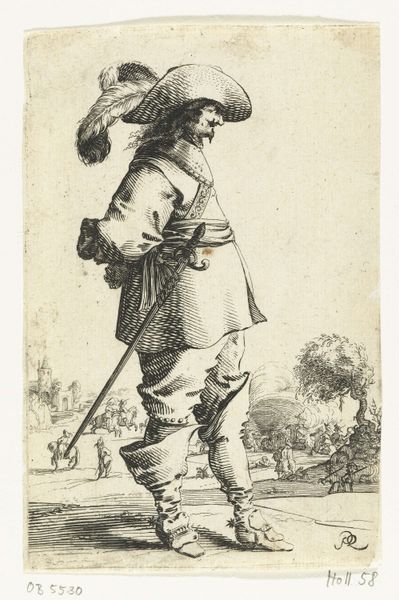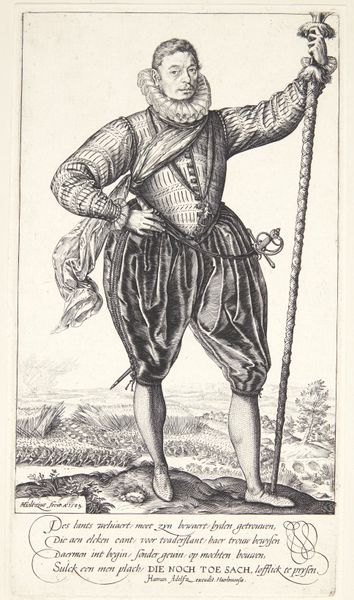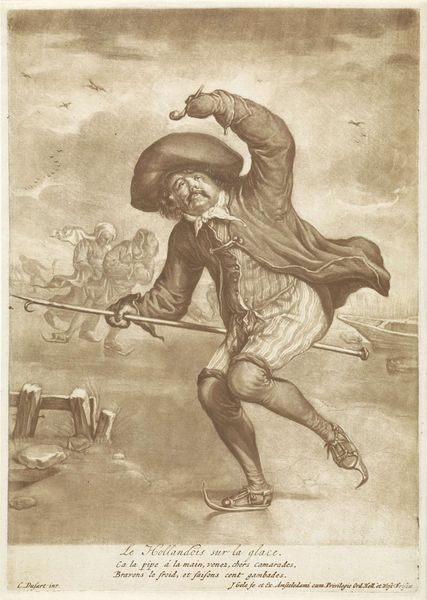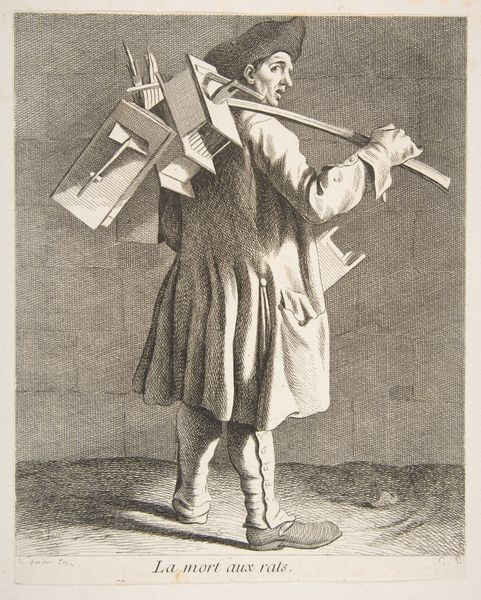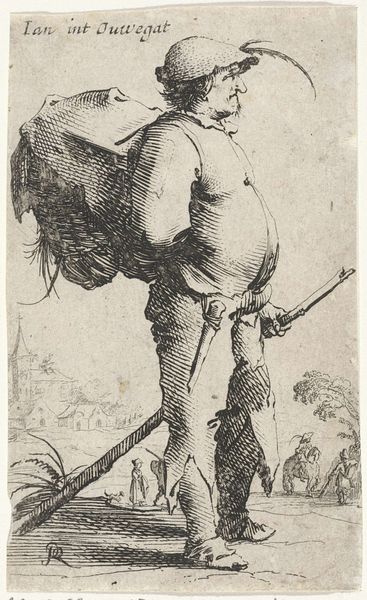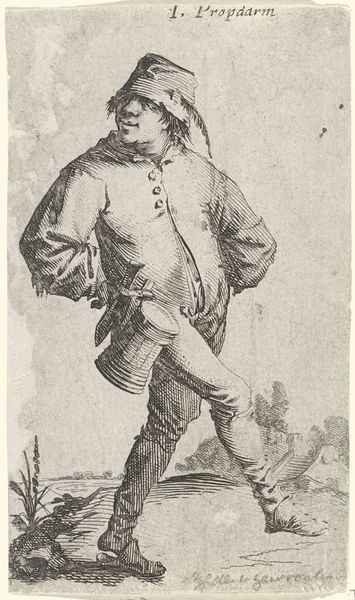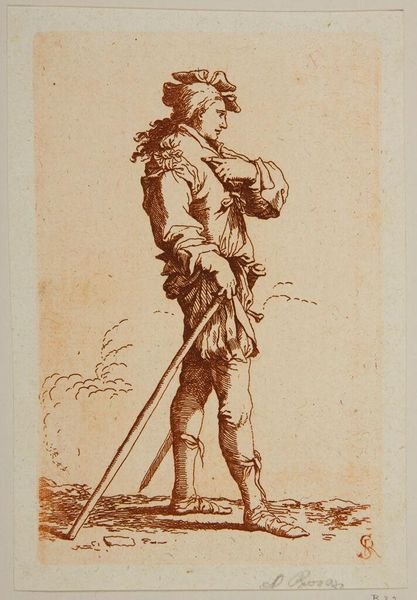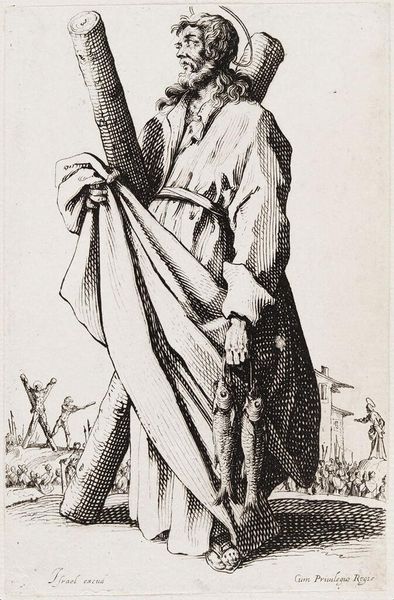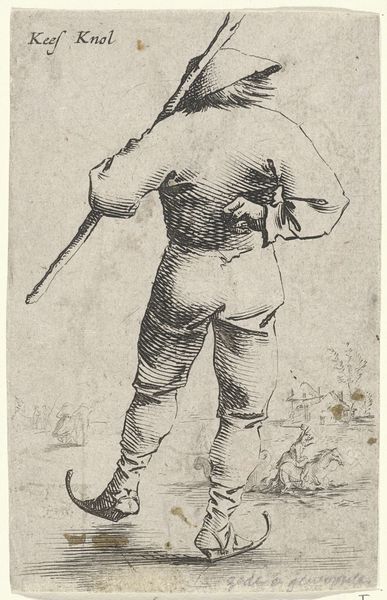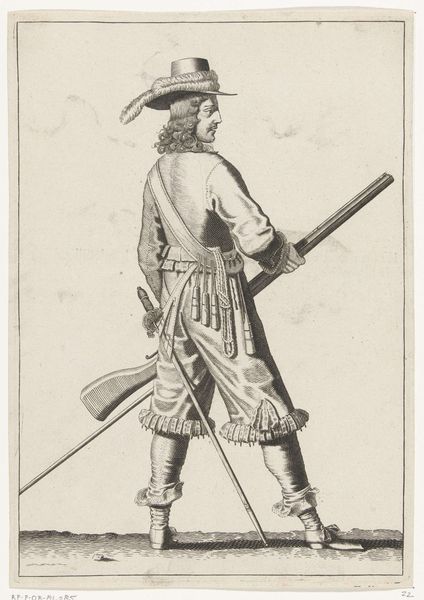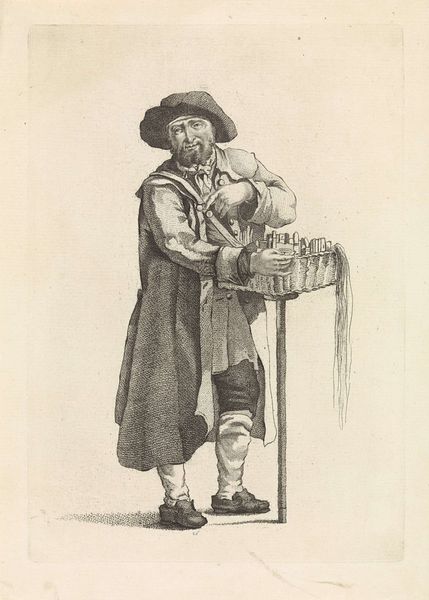
painting, oil-paint
#
portrait
#
baroque
#
painting
#
oil-paint
#
oil painting
#
genre-painting
#
realism
Dimensions: 93.5 x 164 cm
Copyright: Public domain
Curator: Ribera’s “The Clubfooted Boy,” painted in 1642, is a striking work currently residing in the Louvre. It arrests you, doesn’t it? Editor: It does. The light catches on his smiling face, drawing me immediately into this rather confronting realism. The texture feels so immediate, as if I could touch the fabric of his simple clothes. Curator: Absolutely, Ribera captures a remarkable likeness through close observation and detail. But consider also the societal implications. The boy’s physical difference—his clubfoot—was likely cause for social stigma in 17th-century Naples. Yet Ribera presents him not as pitiable, but as dignified, almost heroic. Editor: You’re right. There’s strength in the pose, defiance perhaps. The earthy color palette really contributes to that sense of groundedness, and the background almost vanishes, placing all emphasis on the boy’s figure and expression. Curator: And what of the paper he holds? The text translates roughly to “Give alms for the love of God.” It highlights the intersection of poverty, disability, and social structures that confined individuals like him. By presenting him smiling, does Ribera intend to challenge ableist prejudices? Does this become a work that reflects the beginnings of social mobility and resistance against rigid societal stratifications? Editor: Or, could that very smile be read semiotically, pointing at a more complex network of meanings? Is it a genuine expression of joy, or does it also mask a hidden story? Maybe it serves to further heighten the dramatic impact, complicating our engagement and moving our sight from any obvious sympathy. The rendering here seems meticulously crafted, particularly that contrapposto stance, the texture on the garments, and the strategic distribution of light that commands an attentive study of form. Curator: The beauty of this painting lies in these tensions. Ribera does not give us easy answers; he invites a sustained, critical gaze towards individuals historically marginalized. It serves as a lens through which to understand the systemic disparities that impacted vulnerable communities. Editor: An invitation to delve beneath surfaces. It makes us see the power of those surfaces. I am also caught by that stark horizon line and how the boy nearly transcends its earthbound limits through posture. A formal elegance that makes this work live for a very long time.
Comments
No comments
Be the first to comment and join the conversation on the ultimate creative platform.
